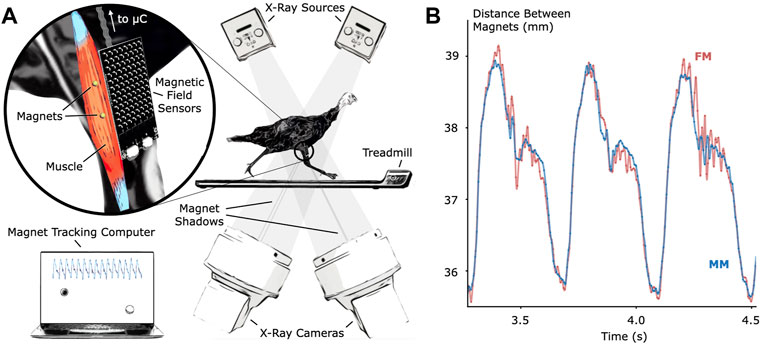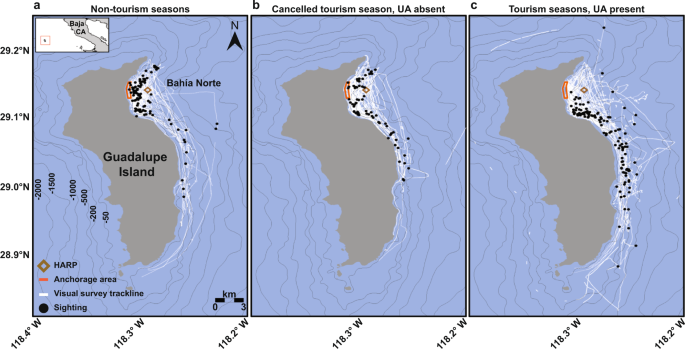マサチューセッツ大学アマースト校の研究者が、蛍光塗料、ピペット、テント、ピンセット、ハサミを駆使して、植物、病原菌、ハチの三者間のつながりを追跡調査 Researchers at UMass Amherst deploy fluorescent paint, pipettes, tents, tweezers and scissors to trace three-way connection between plants, pathogens and bees
2022-10-31 マサチューセッツ大学アマースト校

One of the countless bumblebees, painted blue to track bee health. Credit: Ben Barnhart
研究では、花冠の長さがこの病原体のハチへの感染に影響を与えることが示された。花冠が短いと、花の中に入るハチの糞が少なく、蜜を求めるハチの通り道になる。
研究チームは、自生の野草のパッチを植え、それをテントで囲んだ。このテントの中にマルハナバチを放し飼いにした。半分のハチは健康で、ヴァン・ウィックたちは識別しやすいようにハチの色を青に塗った。残りの半分には、C. bombiを接種した。
次に各テント内の花の物理的形質を変え、どの形質がハチの健康に最も影響を与えるかを調べた。花冠の長さを調べるため、Van Wyk とそのチームは小さなハサミで 105,000 個以上の花を切り落とした。また、花の向きによる影響を調べるため、十字架のように並べた花と、直線的に並べた花を用意した。
また、蜜の量や分布がミツバチの健康状態に影響を与えるかどうかも検証した。6,500本以上の花に蜜を入れた小さなピペットを差し込み、甘い蜜をたくさん吹き付けて、花1本あたりの蜜の量が関係しているかどうかを調べたり、植物群全体に砂糖水をかけて、蜜の分布がハチの健康に影響するかどうかを調べたりした。さらに、花を咲かせる植物を密に植えたものと、広めに植えたものを比較した。
その結果、花冠の唇を切り詰めたり、花の群れの中に蜜を均等に配したり、花の間隔を広くしたりすると、病原菌の感染が少なくなることがわかった。花冠を切り落とした花では幼虫の発生が多く、蜜が均等に分配された花畑でも同様であった。
<関連情報>
- https://www.umass.edu/news/article/want-save-bees-pay-attention-pathogens-and-flowers
- https://esajournals.onlinelibrary.wiley.com/doi/abs/10.1002/ecy.3866
複数の花形状を操作することで、花粉症媒介に関わる役割を実証 Manipulation of multiple floral traits demonstrates role in pollinator disease transmission
Jennifer I. Van Wyk,Amy-Mei Lynch,Lynn S. Adler
Ecology Published: 02 September 2022
DOI:https://doi.org/10.1002/ecy.3866
Abstract
Plants modulate multitrophic ecological interactions, and variation in plant traits can affect these interactions. Pollinators are exposed to pathogens at flowers and acquire or transmit pathogens at different rates on different plant species, but the traits mediating those interactions are almost entirely unknown. We experimentally manipulated five plant traits that span scales including flower, inflorescence, and plant, to determine their effects on pathogen transmission between foraging bees. Specifically, we manipulated two morphological traits (corolla lip length and flower orientation within an inflorescence) and three resource distribution traits (inflorescence nectar, plant patch nectar and plant aggregation) in tents to test how plant traits affect bee pathogen transmission. We also quantified foraging behavior and fecal deposition patterns as potential mechanisms driving differences in transmission, and assessed trait manipulation consequences for bee reproduction. We found that pathogen transmission was reduced when we trimmed the corolla lip, evenly dispersed nectar distribution within an inflorescence, or aggregated plants in space. Some traits also affected bee reproduction; tents with trimmed corollas had more larval production than control tents, and tents with evenly distributed nectar across plant patches had more larval production than tents with clumped resources. Thus, some trait manipulations both reduced transmission and increased bee microcolony reproduction, although our design does not allow us to discern whether these are related or separate effects. Taken together, our results demonstrate causal effects of several floral traits on pathogen transmission and pollinator reproduction, indicating the importance of intraspecific plant trait variation for pollinator health and population dynamics.


